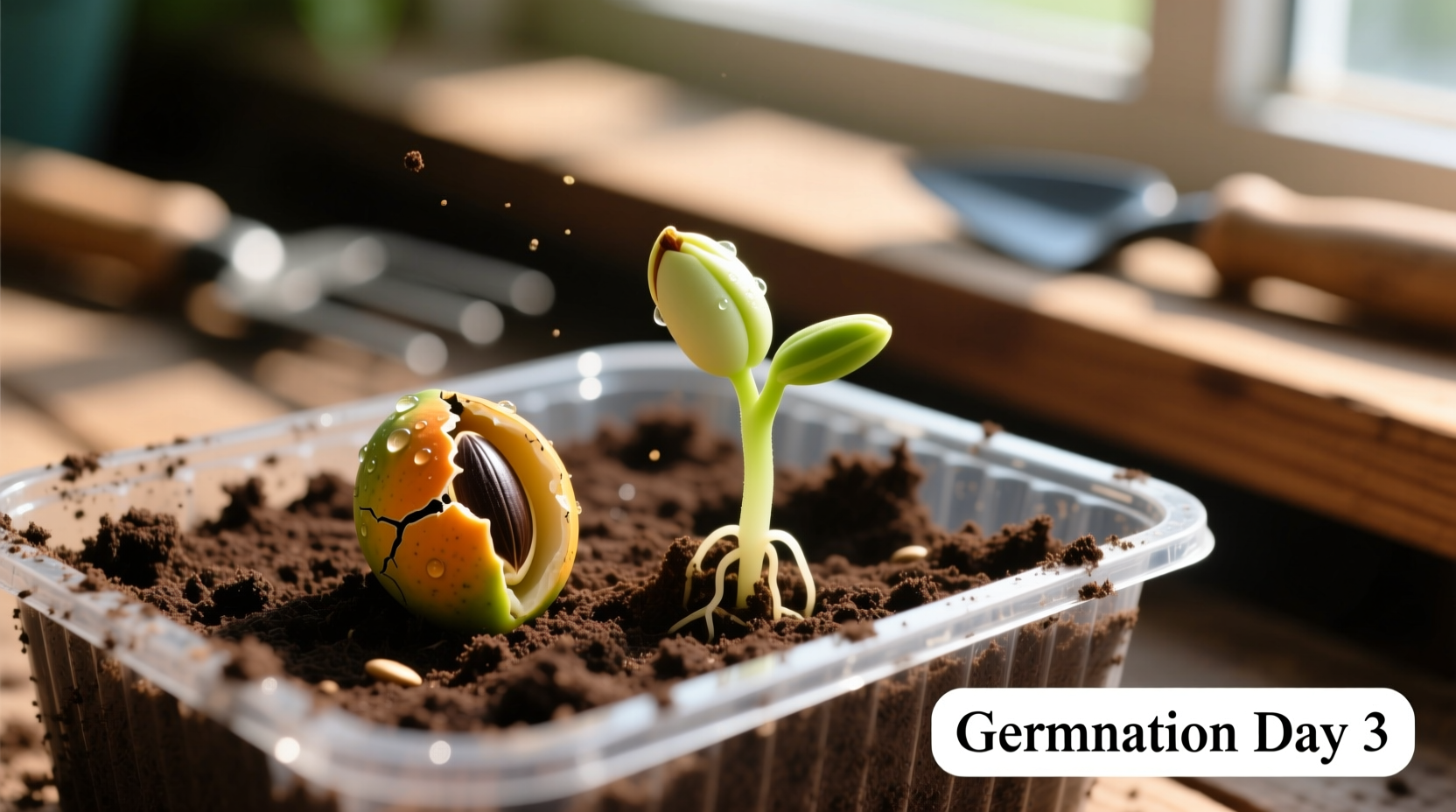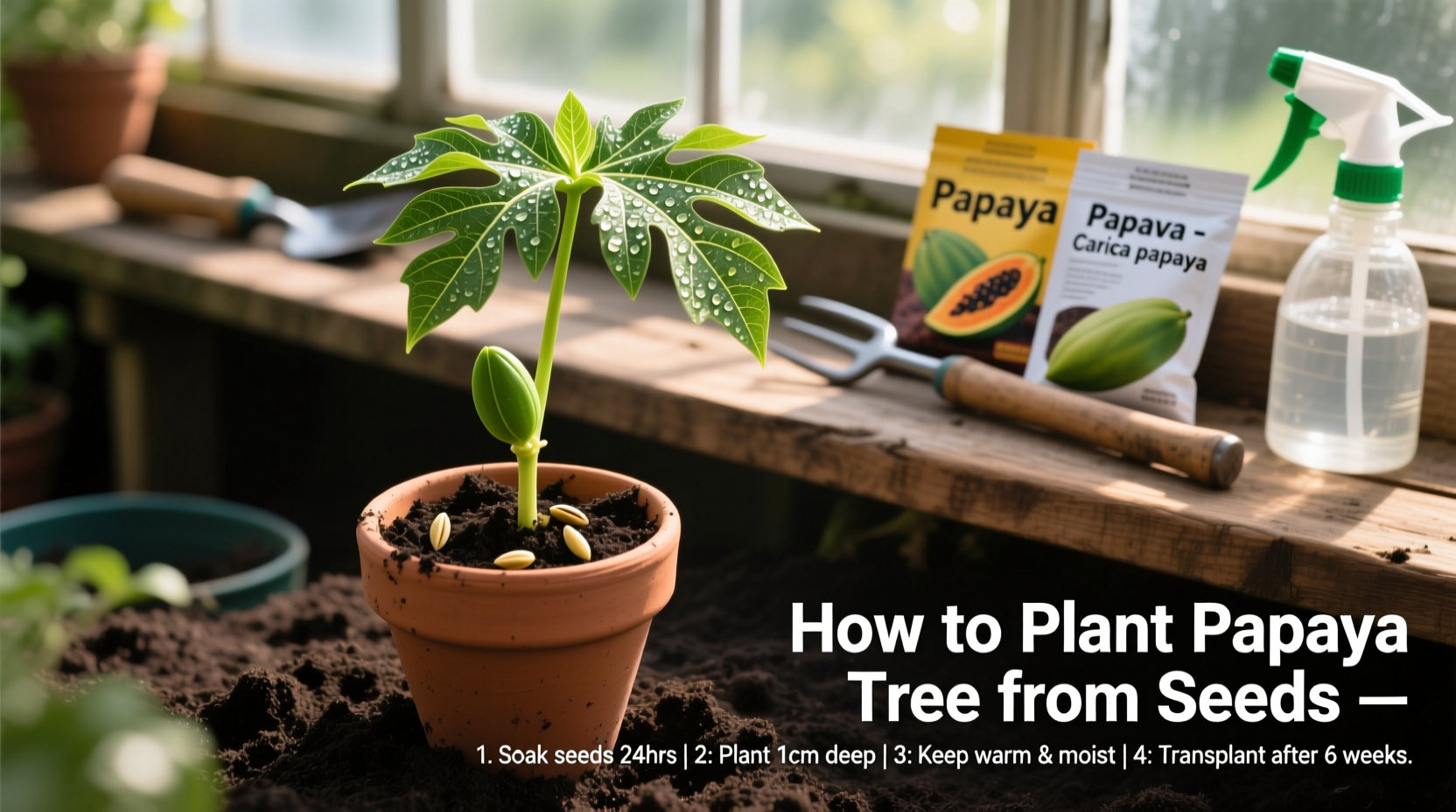Why Growing Papaya from Seeds Beats Buying Seedlings
Starting papaya trees from seeds gives you stronger, more resilient plants compared to nursery-bought seedlings. Home-germinated papayas develop robust root systems that adapt better to your specific climate and soil conditions. Plus, you can select seeds from your favorite fruit variety, ensuring you get exactly the flavor profile you prefer. Unlike store-bought plants that may carry diseases, your home-grown papayas start with clean genetics and zero pesticide exposure.
Your Papaya Seed Starting Checklist
Before planting, gather these essential items for successful papaya germination:
- Fresh papaya seeds (never use dried or store-bought seeds)
- Seed trays or small pots with drainage holes
- Well-draining potting mix (50% peat moss, 30% perlite, 20% compost)
- Clear plastic humidity dome or plastic wrap
- Heat mat (optional but recommended for cooler climates)
- Grow light or sunny south-facing window
Step 1: Selecting and Preparing Quality Seeds
The success of your papaya tree begins with seed selection. Choose seeds from fully ripe, disease-free papayas with deep orange flesh. Avoid seeds from underripe or overripe fruit. Carefully scoop seeds into a fine mesh strainer and rub them under running water to remove the gelatinous coating—this prevents fungal growth during germination. Spread cleaned seeds on paper towel and dry for 48-72 hours in a shaded, well-ventilated area. Properly dried seeds should feel hard and separate easily.
| Seed Quality Indicator | Good Seeds | Poor Seeds |
|---|---|---|
| Color | Dark brown to black | Pale yellow or white |
| Texture | Hard, smooth surface | Soft, mushy, or cracked |
| Smell | Neutral or slightly earthy | Sour or musty odor |
This quality comparison comes from the University of Florida IFAS Extension's comprehensive papaya cultivation guide, which documents seed viability factors affecting germination success rates.
Step 2: Creating the Perfect Planting Environment
Papaya seeds require specific conditions to germinate successfully. Fill seed trays with pre-moistened potting mix, leaving 1 inch of space below the rim. Plant 3-4 seeds per cell, positioning them horizontally 1/4 inch deep. Gently cover with soil and mist until surface is damp but not soggy. Maintain consistent soil temperature between 70-85°F (21-29°C)—this is critical for optimal germination. In cooler climates, use a heat mat underneath trays. Cover trays with a humidity dome to maintain 70-80% relative humidity during germination.

Step 3: Germination Timeline and Care
Understanding the germination process helps you provide appropriate care at each stage:
- Days 1-7: Seeds absorb water and begin metabolic activity. Keep soil consistently moist.
- Days 7-14: Radicle (first root) emerges. Maintain warm temperatures (80°F ideal).
- Days 14-21: Hypocotyl (stem) pushes through soil. Provide 12-16 hours of bright light daily.
- Days 21-35: First true leaves develop. Begin hardening off process if moving outdoors.
This germination timeline is verified by research from the University of Hawaii College of Tropical Agriculture and Human Resources, documented in their papaya production guide. Their field studies show papaya germination rates drop significantly below 65°F or above 90°F.
Step 4: Transplanting Your Seedlings Successfully
Transplant papaya seedlings when they reach 6-8 inches tall with 3-4 true leaves. Choose a location with full sun (minimum 6 hours daily) and protection from strong winds. Dig a hole twice as wide as the root ball but no deeper than the container. Gently loosen roots without breaking the soil ball. Place seedling in hole, backfill with native soil mixed with compost, and water thoroughly. Space multiple plants 8-10 feet apart to allow for mature growth. For container growing, select a pot at least 15 gallons with excellent drainage.
Step 5: Critical First-Year Care Routine
Proper care during the first year establishes your papaya tree's long-term health:
- Watering: Keep soil consistently moist but not waterlogged. Water deeply 2-3 times weekly, increasing frequency during hot, dry periods.
- Fertilizing: Apply balanced 10-10-10 fertilizer monthly during growing season. Supplement with magnesium and iron for vibrant foliage.
- Pruning: Remove damaged leaves but avoid excessive pruning. Papayas grow from a single stem—never cut the top.
- Pest monitoring: Check regularly for spider mites, aphids, and fruit flies. Use insecticidal soap for infestations.
When NOT to Plant Papaya Seeds: Climate Considerations
While papayas grow in many regions, certain conditions make seed planting unsuccessful. Avoid planting outdoors when temperatures consistently fall below 55°F or rise above 95°F. Papayas cannot tolerate frost and suffer from cold stress below 32°F. In USDA zones 9-11, plant after last frost date in spring. For zones below 9, grow in containers you can move indoors during cold months. High humidity environments increase fungal disease risk—provide extra air circulation in these conditions.
Troubleshooting Common Papaya Seedling Problems
Address these frequent issues promptly to save your young papaya trees:
- Damping off: Seedlings collapse at soil line. Solution: Improve air circulation, reduce watering, apply cinnamon powder as natural fungicide.
- Yellowing leaves: Often indicates overwatering or nutrient deficiency. Solution: Check soil moisture, apply balanced fertilizer.
- Slow growth: Usually caused by cool temperatures or poor light. Solution: Move to warmer location with more direct sun.
- Leaf spots: Fungal or bacterial infection. Solution: Remove affected leaves, avoid overhead watering, apply copper fungicide if severe.
From Seed to Fruit: What to Expect
With proper care, your papaya tree will follow this development timeline:
- 2-5 weeks: Germination and first true leaves
- 2-3 months: Rapid vertical growth (1-2 feet monthly)
- 5-7 months: First flowers appear (identify male/female plants)
- 9-12 months: First fruit ripens (smaller than mature fruit)
- 18-24 months: Full fruit production begins
Remember that papaya trees are either male, female, or hermaphrodite. Only female and hermaphrodite plants produce fruit, and you'll need to identify your plant's gender when flowers appear. Hermaphrodite plants are preferred for home growing as they self-pollinate.
Pro Tips for Maximum Fruit Production
Professional growers use these techniques to boost papaya yields:
- Mulch with 3-4 inches of organic material to maintain soil moisture and temperature
- Apply calcium-rich amendments to prevent blossom end rot in fruit
- Hand-pollinate flowers during rainy seasons when insects are less active
- Prune lower leaves regularly to improve air circulation and reduce disease
- Rotate fertilizer types monthly to provide comprehensive nutrition











 浙公网安备
33010002000092号
浙公网安备
33010002000092号 浙B2-20120091-4
浙B2-20120091-4